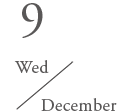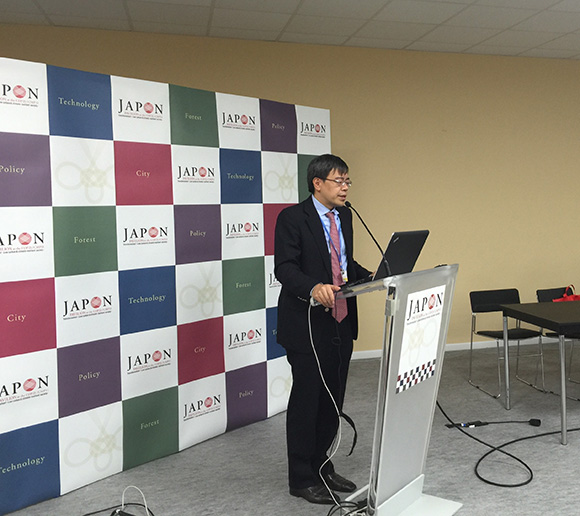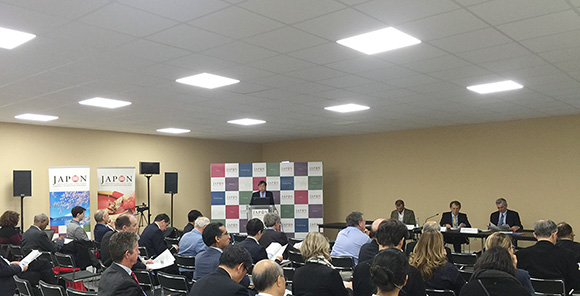New Methods for Comparing Levels of Efforts and Evaluations of INDCs
-Transparency, Policy Surveillance, and Levels of Effort-
Research Institute of Innovative Technology for the Earth (RITE); Resources for the Future (RFF); Fondazione Eni Enrico Mattei (FEEM)
Outline
Research Institute of Innovative Technology for the Earth (RITE), U.S. and European scholars are undertaking research to better refine the analytics underlying ex-ante/ex-post evaluations of INDC proposals and performance. We will present the importance of measuring comparability of efforts, our modeling framework for empirical examination of INDCs, and its application to develop examination for several submitted INDCs, on the basis of multiple metrics.
Program
-
- Transparency, Policy Surveillance, and Levels of Effort: Assessing and Comparing INDCs
- Pr. Raymond Kopp: Senior Fellow and Co-Director of the Center for Energy and Climate Economics, Resources for the Future
-
- Assessment and comparison of INDCs: effectiveness vs fairness?
- Prof. Carlo Carraro: Professor of Environmental Economics, Ca’ Foscari University of Venice; and Coordinator, Climate Change and Sustainable Development Program, FEEM
-
- RITE’s Evaluations on Emission Reduction Efforts of the INDCs and the Expected Global Emissions
- Dr. Keigo Akimoto: Group Leader, Chief Researcher, Systems Analysis Group, Research Institute of Innovation Technology for the Earth
-
- A model based assessment of the INDCs
- Dr. Massimo Tavoni: Associate Professor at the Department of Management, Politecnico di Milano; and Deputy Coordinator, Climate Change and Sustainable Development Program, FEEM
-
- Q&A
Summary
This session focused on the evaluations on emission reduction efforts of the INDCs.
Ray Kopp introduced the session on assessing and comparing INDCs by discussing the appropriate methods to do so. In particular he stressed the fact that the metrics used in such studies needed to be comprehensive, measurable, replicable and universal. The second speaker, Carlo Carraro, showed a comparative assessment of INDCs through three simple indicators: GHG emissions reductions, consistency with 2 degrees trajectory, emissions reductions costs per GDP. Keigo Akimoto then presented the RITE assessment of INDCs through 7 indicators including different emissions reductions ratios (compared to different base years/to baseline), emissions per capita, CO2 intensity of the economy, emissions reduction costs per GDP, marginal abatement costs and electricity prices modelled with DNE21+. As a result, Switzerland, Japan or EU’s INDCs were evaluated as ambitious, whereas China and India were more or less assessed as business as usual. Last, Massimo Tavoni presented the results of the analysis conducted within FEEM with the WITCH model, based on global electricity capacities induced by INDCs, renewable installation in 2030, carbon prices to assess effectiveness, efficiency and equity. It turns out they are relatively fair and demonstrate significant effort, though with large disparities among countries and a necessity to be strengthened.
Q&A with the audience raised several questions and comments. One of the main ideas was that as the results showed China and India’s efforts were among the lowest, such a review process could serve as a support for discussion for review cycles (PDCA) in order to encourage all countries to strengthen their INDCs. Regarding India, it should be noted that given the size of the country (India is almost a continent), aggregated INDCs or marginal abatement costs tend to hide huge disparities in terms of costs and efforts among regions.
Key Messages
- There is no single silver-bullet indicator measuring the emission reduction efforts of the INDCs in terms of the international fairness and equity.
- However, assessing the fairness and equity of INDCs through multiple meaningful indicators is essential for revisions of INDCs in the future.
-
The assessments based on DNE21+ and WITCH models show that:
- There are gaps in global emissions between expected by the INDCs and required for the 2°C goal, and the deeper emission reductions in 2030 and beyond are needed for the goal;
- there are large gaps in marginal abatement costs across countries, and risks of carbon leakage are concern;
- the INDCs seem relatively fair in terms of burden sharing between developing and developed countries if the differences in economic power are considered.
Photograph
Reporters
Nakagami Yasuhide, Bianka Shoai Tehrani, Research Institute of Innovative Technology for the Earth (RITE)







